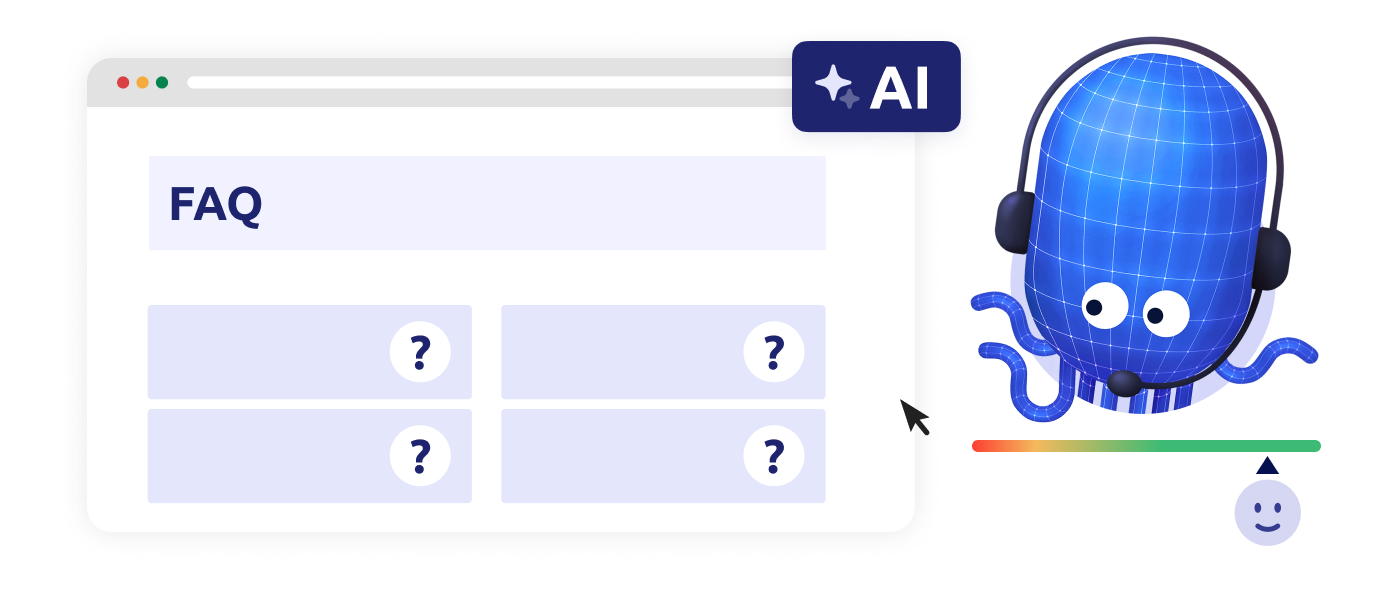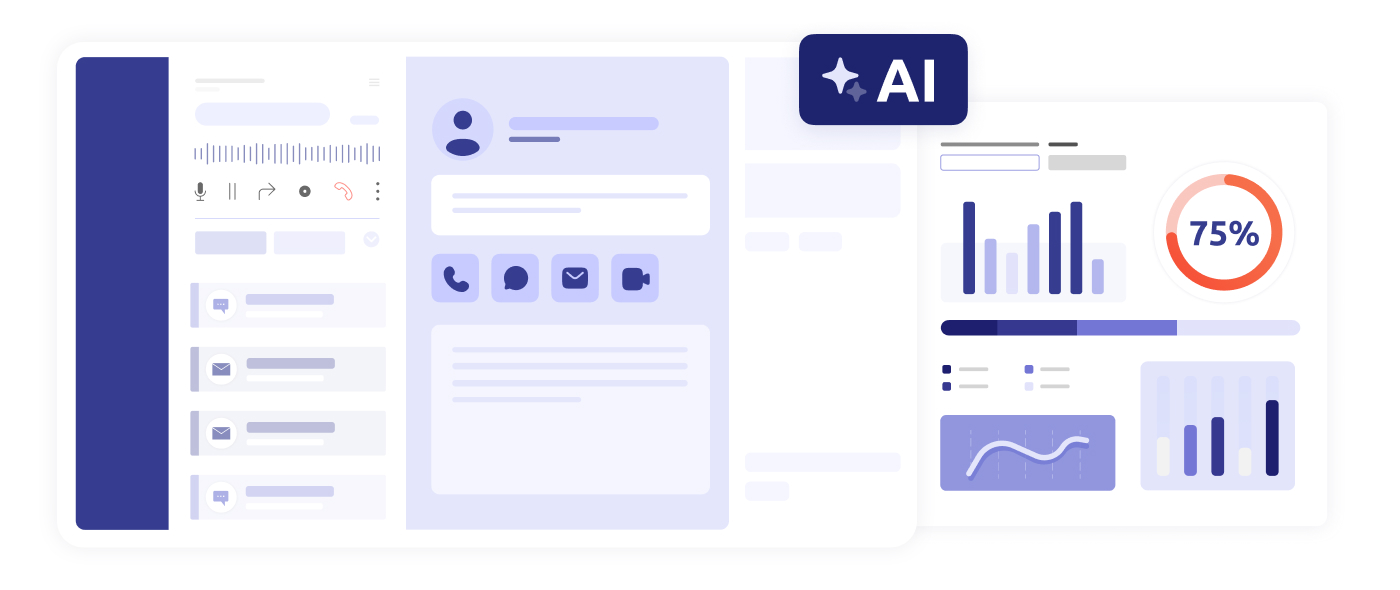Immediacy: Why the Dynamic FAQ Is Becoming a Strategic Customer Self-Service Lever
Shifting Customer Behavior Toward Self-Service
Customers no longer want to wait for an agent to walk them through every step. They want instant answers, on their own, with zero friction. This behavior is rooted in habits formed online. Googling, asking a voice assistant, or chatting with a bot have become second nature. Customer autonomy isn’t a luxury anymore, it’s the standard.
According to Gartner, “45% of users who started with self-service believed the company didn’t understand their needs, while the most common reason for failure was that 43% of customers couldn’t find relevant content to solve their issue.” (CXToday)
This is why selfcare tools for contact centers must rise to the challenge: quick, simple, able to understand natural language, and capable of delivering concrete, helpful responses. That’s exactly where a dynamic FAQ makes the difference.
The Limits of Static FAQs in Contact Centers
Too often, traditional FAQs feel like generic content libraries. Poorly structured, long to navigate, and rarely updated, they bring little real value. Because the content is static and hard to maintain, its impact on reducing incoming contacts remains minimal. In most cases, the customer either gives up or calls anyway. This explains why so many selfcare strategies fall flat when they rely solely on outdated FAQ models.
Tangible Benefits for Contact Centers

Reducing Repetitive Call Volume
A well-designed dynamic FAQ efficiently handles the most common questions without human intervention. Order tracking, password resets, refund timelines, or return policies can all be resolved through self-service. The result: incoming call volumes drop, and agents can focus on high-value, complex cases.
The business benefits are significant, prompting more companies to invest in AI-driven solutions. According to Gartner, “80% of customer service and support organizations will integrate generative AI technologies to improve the customer experience.”
A Smoother, More Consistent Customer Experience
Here, the customer self-service tool becomes a satisfaction driver. Answers are available 24/7, tailored to the customer’s profile, history, and even their channel of choice (mobile, desktop, chatbot). Information remains consistent across all touchpoints, building trust, while fast access to the right answer elevates the overall experience.
Direct Support for Agents
Deploying a dynamic FAQ doesn’t replace agents, it supports them. By filtering out simple requests, it eases workload pressure. By deepening customer knowledge, it can help refine questions for faster resolution by agents. Agents can then dedicate more time to active listening, solving complex issues, and personalizing the customer relationship. Moreover, FAQ content can double as an internal knowledge base to onboard and assist new hires.
How to Build and Integrate a Dynamic FAQ in Your Contact Center
Key Deployment Steps
It starts with identifying the top recurring topics, the ones generating the highest volume of repetitive inquiries. From there, AI is trained to recognize intents, deliver clear responses, and evolve based on customer feedback. Integration into the contact center’s digital ecosystem is crucial, along with automating updates to keep content relevant.
Best Practices for Content and UX in Self Customer Service
A dynamic FAQ is only as effective as its content. Each response should be concise, straightforward, and aligned with the customer’s language. Organizing content by themes, using internal links, and adding interactive elements such as accordions or auto-suggestions improve usability. Integration with chatbots or a CRM adds another layer, enriching responses or triggering automated workflows based on specific conditions.
Integration Into the Broader Self-Service Ecosystem
An AI-driven dynamic FAQ isn’t meant to operate in a silo. It fits into a larger, seamless customer journey alongside other self-service tools: client portals, knowledge bases, voicebots, or mobile apps. If a customer starts in the FAQ and switches channels, the information should remain consistent and carry through the conversation. This continuity is key to delivering a smooth and satisfying customer experience.
Toward a Proactive Dynamic FAQ: The Next Step in Customer Self-Service

Delivering Real-Time Personalized Answers
The future of dynamic FAQ goes beyond answering direct questions; it will become predictive and contextual. Thanks to generative AI models and natural language processing (NLP), the tool will be able to analyze simultaneously:
- the customer’s recent interactions (chat, email, call)
- CRM data and customer profile details
- account-related events (orders, incidents, subscriptions)
This real-time data fusion enables proactive answers before the customer even asks. Instead of reacting, the FAQ becomes an assistant—for instance, instantly showing return policies to a customer browsing a product page they just purchased, or suggesting a password reset after several failed login attempts.
Data-Driven Insights and Continuous Improvement
A smart FAQ also thrives on continuous learning. Every click, search, partial read, or drop-off generates data. When aggregated and analyzed, this data drives improvements in:
- which answers are displayed,
- how content is worded,
- the accuracy of auto-suggestions,
- and the overall user experience.
This ongoing optimization resembles an MLOps cycle applied to selfcare: usage data feeds AI models, which refine predictions and recommendations, then real-world results are monitored to validate impact.
From a technical standpoint, tomorrow’s proactive FAQs will rely on:
- vector-based semantic search (via embeddings) to surface the most contextually relevant answers,
- supervised and reinforcement learning pipelines to refine responses based on feedback,
- and native CRM integrations plus orchestration tools to automatically trigger actions (sending an email, creating a ticket, or suggesting an offer).
Conclusion
When designed as a true self-service tool for contact centers, the dynamic FAQ goes far beyond a simple help page. By leveraging artificial intelligence, it delivers both strategic and operational value to modern customer service challenges: cost control, instant satisfaction, agent support, and omnichannel consistency.
For businesses ready to invest in long-term customer experience, this is now a must-have. Customer self-service is no longer optional, and AI is the driving force. The real question is no longer if you should deploy a dynamic FAQ, but when and how.
Découvrez notre IA pour l'expérience client



